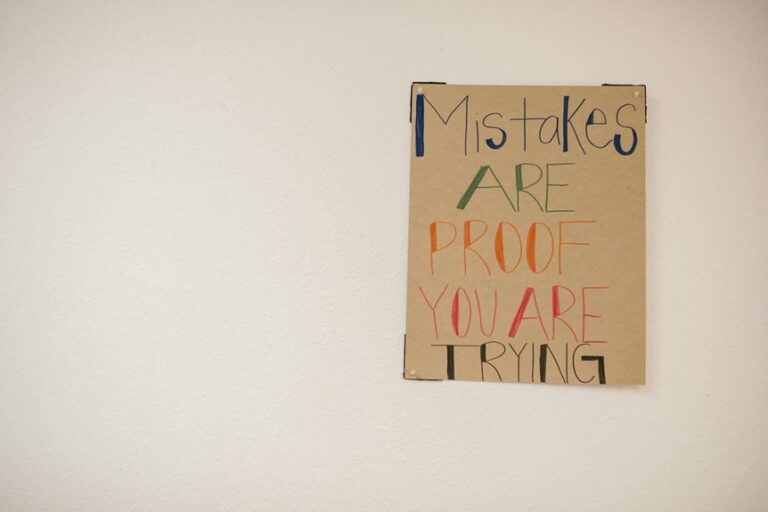We’ve all been told the clichés: “Mind over matter,” “Believe in yourself,” “If you can dream it, you can do it.” Sounds nice, but is there actually any science behind all this positive thinking hype? Turns out—yes, there is. Enter the Pygmalion Effect, a psychological phenomenon so simple it’s almost comical: people perform better when you expect them to.
Think about that for a second—just believing that you (or someone else) can achieve something makes it more likely to happen.
What’s more, the Pygmalion Effect isn’t some woo-woo self-help theory. It’s backed by decades of research. The power of expectations is so real that it can literally alter outcomes in business, education, and yes, even your relationships. The bottom line? You’ve been underestimating the power of belief—both in yourself and in those around you.
You’re Probably Already Doing This—But Not on Purpose
I’m sure you’ve heard of self-fulfilling prophecies. That’s the Pygmalion Effect in action, and trust me, you’re already engaging with it on some level. When you walk into a situation expecting things to go wrong, they usually do, right? Or when you believe that the person you just hired is a superstar, guess what—they usually perform like one. Here’s the kicker: this isn’t simply a coincidence. Your expectations are contagious. They shape your behavior and the behavior of those around you.
Here’s a real-life example: I once worked with a manager who believed every new hire would eventually screw up. Guess what happened? They all did.
Turns out, when you assume people will fail, you treat them like they’re going to. No support, no encouragement, just waiting for the inevitable disaster.
On the flip side, I’ve seen teams transform when their leaders expect great things. It’s not magic—it’s psychology.
Origin of the Pygmalion Effect: From Myth to Mindset
The Pygmalion Effect gets its name from an ancient Greek myth about a sculptor named Pygmalion. Disillusioned by the imperfections of the world, Pygmalion sculpted his version of the perfect woman out of ivory.
He fell in love with his creation, and through his unwavering belief, she eventually came to life. The message? Expectations lead to reality.
Fast forward to the 20th century, and two researchers, Robert Rosenthal and Lenore Jacobson, applied this idea to the world of psychology. Their groundbreaking study (often referred to as the Rosenthal and Jacobson experiment) involved teachers and students.
The duo told teachers that certain students were “bloomers” who would show significant academic improvement—though, in reality, these students were chosen at random. Sure enough, by the end of the year, those randomly selected students showed improved performance, all because their teachers expected them to.
The magic of the Pygmalion Effect lies in how we internalize the expectations of others. Whether you’re dealing with low expectations or sky-high ones, you’ll eventually start acting in ways that align with them.
When people believe in your potential, or when you believe in others, extraordinary things can happen. Simply put, your expectations shape reality more than you might realize.
Now, let’s get into how you can actually leverage this mind-bending phenomenon in your business (and personal life). Spoiler alert: It’s easier than you think.
How to use the Pygmalion Effect in Business and Life
So how do you actually apply this in the real world? It’s not faking confidence or giving empty praise. It’s setting the right expectations for yourself and others and following through with actions that reinforce those beliefs.
It’s almost like priming your brain (and everyone else’s) for success.
Here are some practical ways of how to use the Pygmalion effect in everyday life.
1. Set High Expectations for Yourself
Here’s the truth: people will only believe in you as much as you believe in yourself. So, if you’re walking around with a low-key “I’m probably going to fail” vibe, that’s exactly what you’re going to project. It’s like showing up to a boxing match with your hands tied behind your back. You’ve already lost before you even start.
Instead, flip the script. Set ridiculously high expectations for yourself—and I mean ridiculously high. You might not hit them every time, but aiming high ensures you’ll land further than if you aimed low. Stop apologizing for having ambition. People respect confidence, not self-deprecation.
2. Believe in Your Team More Than They Believe in Themselves
If you manage a team, you hold an enormous amount of power over their performance. Your belief in them (or lack thereof) will directly influence how they perform. Expect excellence. Trust me, the people you lead will notice—and they’ll rise to the occasion.
This doesn’t mean being unrealistic or pushing people to the point of burnout. It’s about seeing potential where others don’t and nurturing it. Sometimes, your belief in someone is the only thing that keeps them going when they’re ready to throw in the towel.
3. Build a Feedback Loop of Positive Reinforcement
Here’s a dirty little secret about success: most people have no idea what they’re doing until someone tells them they’re doing a good job. It sounds ridiculous, but it’s true. When you provide consistent, positive feedback, you’re reinforcing the behavior that led to success in the first place.
If you’re a leader, manager, or even just a good friend, create a feedback loop that continuously boosts the people around you. Let them know when they’re doing well, and be specific. The more you reinforce the effort, the more people will want to meet your expectations. This isn’t about coddling—this is about showing people what’s possible when they’re at their best. And once they see it, they’ll want to keep going.
4. Surround Yourself with People Who Have High Expectations of You
You’re the average of the five people you spend the most time with—so choose wisely. If you’re hanging around people who expect the bare minimum from you, guess what? That’s exactly what you’ll give them. Surround yourself with people who challenge you, who expect greatness from you, and who won’t let you settle for anything less.
You’ll start noticing a shift in your own mindset, because you’ll want to meet (and exceed) those expectations. It’s like a positive feedback loop for success, and it works in business just as well as it does in your personal life.
5. Create a Culture of High Expectations
In a business context, leveraging the Pygmalion Effect means nurturing an environment where excellence is the standard. But here’s the caveat: expecting greatness from your team doesn’t mean driving them into the ground. You have to balance high expectations with support. Push for excellence, but also provide the resources and encouragement people need to get there.
This is where a lot of leaders mess up. They think they can set high standards without offering any backup. That’s not leadership—it’s just setting people up for failure. If you want the Pygmalion Effect to work, you need to be the cheerleader and the coach.
6. Focus on Effort, Not Just Results
One of the biggest mistakes people make when trying to leverage the Pygmalion Effect is focusing too much on outcomes and not enough on the effort it takes to get there. If you only praise results, you’re ignoring the process—and the process is where the magic happens.
Think of it like this: when a kid brings home a good grade, don’t just say, “Wow, you’re so smart!” Say, “Wow, you must have worked really hard for this!” That way, you’re reinforcing the effort, which in turn reinforces the behavior that leads to future success.
7. Break Free from the “Realistic” Trap
Here’s a phrase I absolutely can’t stand: “Let’s be realistic.” It’s basically code for, “Let’s lower our expectations so we don’t get disappointed.” But the truth is, “realistic” is just another way to play it safe. And playing it safe is the death of progress.
If you want to leverage the Pygmalion Effect, you need to stop hiding behind “realistic” dreams. Set stretch dreams and aspirations. Challenge yourself to achieve what others might call impossible. Sure, you might fall short—but you’ll be miles ahead of where you’d be if you had aimed for something “realistic.” Think big. Expect big.
8. Start Speaking Success Into Existence
Notice how you talk about your goals? “I hope I get that promotion,” or, “If things go well, I might be able to close that deal.” Stop it. Right now. Words matter. Start talking like success is a foregone conclusion. Instead of hoping for success, expect it.
“I will land that client.” “This team will smash our goals.” It might sound like woo-woo positive thinking, but there’s science behind this. By framing your goals as inevitable, you change how you approach them—and others start to believe you too. It’s not strictly about confidence; it’s creating a mental framework that expects victory.
9. Take the Long View
When you’re playing the long game, short-term losses are just noise. Yet, so many people freak out the second things go sideways. They start doubting themselves, lowering their expectations, and going into full-on damage control mode. This is where most people miss out on the Pygmalion Effect’s real power.
If you expect long-term success, the short-term hiccups won’t phase you. You’ll keep pushing forward, knowing that bumps in the road are part of the process. Whether it’s in business, personal development, or relationships, maintaining high expectations over time creates an upward spiral. It’s about resilience, not perfection.
10. Learn to Expect Failure (But Not Defeat)
Wait, didn’t I just say expect success? Yes, but there’s nuance here. Success isn’t a straight line, and failure is part of the process. The difference between those who succeed and those who don’t is that successful people don’t let failure define them. They expect to hit obstacles but treat them as learning opportunities, not dead ends.
When you expect failure but frame it as a stepping stone, it loses its power over you. You stop fearing it. Instead, you expect to fail—and you expect to learn from it. That shift in mindset is where the Pygmalion Effect works its magic. Failure isn’t final; it’s fuel.
11. Hold Others Accountable to Their Own Greatness
Let’s talk about leadership for a second. It’s easy to get frustrated when people don’t meet expectations, right? But have you ever stopped to ask yourself if you’re holding them to the right standards? If you expect mediocrity from others, that’s exactly what you’re going to get. But if you start holding people accountable for the greatness you see in them, everything changes.
Instead of saying, “Well, they’re doing their best,” say, “I know you’re capable of more, so let’s figure out how to get you there.” Don’t settle for the bare minimum, whether it’s from your employees, your colleagues, or even your friends and family. By holding others accountable to higher expectations, you’re helping them rise to meet their full potential. The Pygmalion Effect in full force.
12. Train Yourself to See Potential Where Others Don’t
You know that person at work everyone’s written off as hopeless? The one who’s constantly overlooked for promotions, projects, or even basic recognition? Here’s a tip: start looking for potential where others see none. The Pygmalion Effect is especially powerful when it’s unexpected.
When you spot potential in someone and vocalize it, you’re giving them permission to believe in themselves—often for the first time. And once they start to believe they can achieve more, they will. This is especially true in business. Leaders who can spot hidden talent and invest in it are the ones who build long-lasting, loyal teams.
Conclusion: You Are What You Expect
The Pygmalion Effect isn’t simply a fancy psychological term—it’s a way of life. Whether you’re leading a team, building a business, or just trying to get through Monday without losing your mind, your expectations shape your reality.
If you expect mediocrity, that’s what you’ll get. If you expect greatness, you’ll be amazed at how often you and the people around you rise to meet it.
The power of this phenomenon lies in its simplicity. It’s not about faking confidence or being delusional—it’s believing in your ability to grow, learn, and succeed, even when the odds are stacked against you.
The Pygmalion Effect is about maximizing the power of expectations—both for yourself and for others.
So, stop playing small. Raise the bar, and watch as your mindset, your business, and your life start to transform.
And remember: you’ll only get as far as you expect to go. So why not aim for the moon? After all, it’s a lot closer than you think.
FAQs
1. What is the Pygmalion Effect?
The Pygmalion Effect is a psychological phenomenon where higher expectations lead to improved performance. In other words, if you believe someone will succeed, they are more likely to perform better.
2. How does the Pygmalion Effect work in business?
In business, leaders can use the Pygmalion Effect by setting high expectations for their team. When people feel that their abilities are recognized and supported, they tend to rise to meet those expectations, leading to better outcomes and higher productivity.
3. Can the Pygmalion Effect be used for self-improvement?
Absolutely. By setting higher expectations for yourself and reinforcing positive self-beliefs, you can tap into the Pygmalion Effect to push past your limits and achieve personal growth.
4. Who discovered the Pygmalion Effect?
The Pygmalion Effect was first studied by Robert Rosenthal and Lenore Jacobson in the 1960s. Their research in classrooms showed that students performed better when teachers were told to expect higher performance from them.
5. How can I use the Pygmalion Effect to improve my leadership skills?
As a leader, you can use the Pygmalion Effect by believing in your team’s potential, setting clear and high expectations, and offering support. When people feel valued and trusted, they often exceed even their own expectations.
6. What are some real-life examples of the Pygmalion Effect?
One well-known example is the classroom study by Rosenthal and Jacobson, where teachers were told certain students were likely to excel. By the end of the school year, these students outperformed others, solely because of the teachers’ higher expectations.
7. Can the Pygmalion Effect backfire?
Yes, if you have low expectations of someone, you may unconsciously undermine their performance. This is known as the Golem Effect, which is the reverse of the Pygmalion Effect.
Yes, the Pygmalion Effect is a type of self-fulfilling prophecy, where expectations influence behaviors and outcomes, turning beliefs into reality.
9. How can I avoid the negative side of the Pygmalion Effect?
To avoid the negative side (i.e., setting low expectations), be mindful of how you perceive and treat others. Ensure that you’re giving everyone a fair chance to succeed by holding them to high but achievable standards.
10. Can the Pygmalion Effect be applied outside of work?
Definitely. The Pygmalion Effect can be applied in personal relationships, education, sports, and any situation where expectations play a role in shaping outcomes. It’s a versatile tool for both personal and social growth.
11. How does the Pygmalion Effect affect team dynamics?
Teams tend to mirror the expectations of their leaders. If a leader expects success and communicates this, the team often internalizes these expectations and works toward achieving them, enhancing overall performance.
12. How long does it take to see results from using the Pygmalion Effect?
Results vary depending on the situation, but consistent positive reinforcement and high expectations can lead to noticeable improvements over time—sometimes within weeks in business or educational settings.
13. Can the Pygmalion Effect change someone’s personality?
While it may not directly change someone’s personality, the Pygmalion Effect can influence behaviors and attitudes, encouraging individuals to adopt more positive and productive habits.
14. How can I implement the Pygmalion Effect in my daily routine?
Start by setting high but realistic goals for yourself and others. Reinforce these expectations through positive self-talk, regular feedback, and consistent support. You’ll soon notice shifts in behavior and performance.
15. Is the Pygmalion Effect scientifically proven?
Yes, the Pygmalion Effect has been extensively studied and validated, most notably through the Rosenthal and Jacobson experiment, which showed that expectations lead to changes in performance in educational settings, but it has since been applied in business and personal contexts as well.









